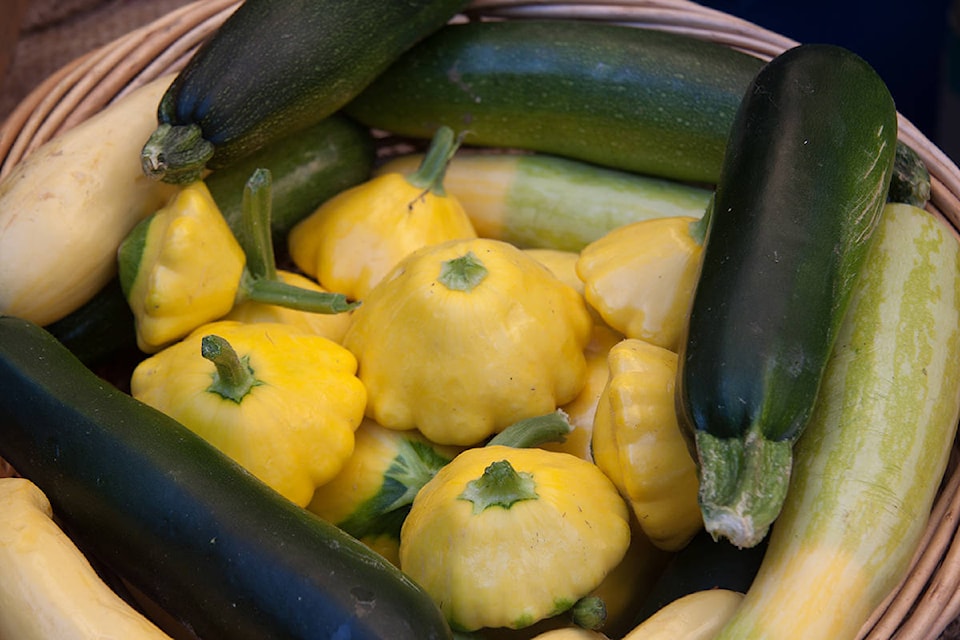Squash 101. It was a “squashed” briefing delivered by two passionate farmers, one seasoned and one green. Arzeena Hamir, the seasoned farmer and owner of Amara Farm, and Derrick Pawlowski, the green farmer and owner of Coastal Rainforest Farm, each disclosed their down and dirty knowledge of winter and summer squash. They both chose to grow squash because of its prolific capabilities, the ease of care, and because squash is delicious.
Planning is key. Whether you use seeds or starts it is imperative that you space this annual when planting.
“You don’t want to squish the plants together. It contributes to the lack of air flow which can bring on powdery mildew,” explained Hamir. “You need a minimum of two feet in all directions for summer squash, and five feet and then some for winter squash.”
Summer or winter squash?
Squash comes in a variety of shapes, colours, flavours and storage duration. Zucchini is yellow or green and oblong while the Ronde de Nice is light green and round. Patty pan is green, light green, yellow, or almost white and it is round with scalloped edges. Winter squash, if properly prepared, will store longer than summer squash. “Don’t let the colour or shape put you off,” encourages Hamir.
The energy spent on squash is in the planting.
“You need to prepare the squash bed, plant, add organic fertilizer, cover, water, and top with mulch,” stated Pawlowski. “I haven’t needed to weed since planting. I just water.”
Squash plants grow both male and female flowers and the flowers are edible. Only the female flowers bear fruit if they are pollinated by bees or hand-pollinated by the farmer. Pawlowski pointed out that you do not want to deplete the plants of the male flowers for fear of reducing the yield of the squash plant.
Eat them, store them and enjoy some more! Hamir and Pawlowski each described their love of the patty pan. “They are a perfect burger size,” explained Hamir. “Cut them into slabs and put on the barbecue. They don’t fall through the grates.”
Pawlowski explained that many people cut the top off the patty pan, scoop the insides and stuff them with their favourite combination of ingredients. Other favourites of the two farmers are the winter kabocha and the delicata squash.
Squash with blemishes or cuts must be eaten as soon as possible and take care in preparing and storing your winter squash.
“You want to cure them,” states Hamir.
Pawlowski agrees that you want to ensure there is no residual soil glued to the skin. Wipe the squash with soapy water, dry it, then leave it in a warm spot to harden the skin as much as possible. You are essentially drying it out to use later. Store your cured squash in a root cellar or other cool location.
You can find Amara Farm produce at the Comox Valley Farmers Market, Merville Organics, and Edible Island Whole Foods Market in Courtenay.
Look for Coastal Rainforest Farm produce at the Comox Valley Farmers’ Market, the Pier Street Farmers Market in Campbell River, and DeeKayTee Ranch Market on Headquarters Road, Courtenay.
